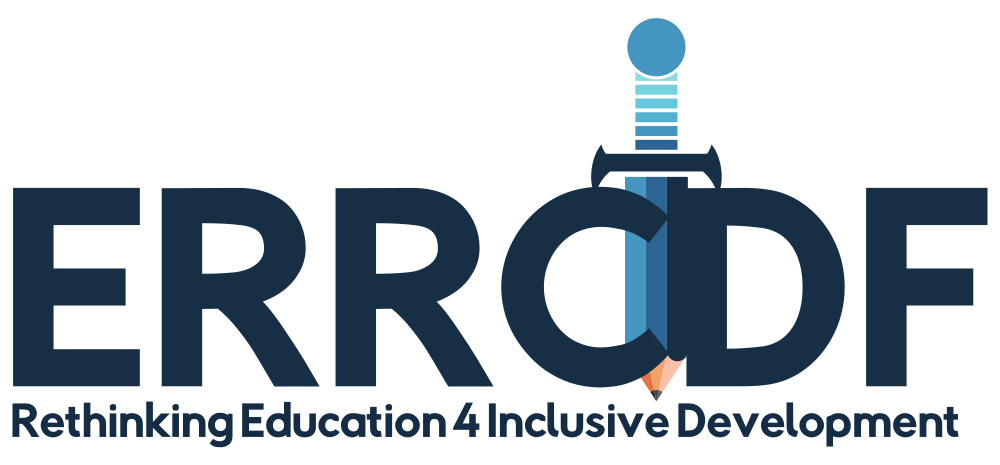Detoxification from brian-drain debate: A close review to bitter reality in reference to Nepal
DOI:
https://doi.org/10.38140/ijms-2024.vol1.04Keywords:
Brian-drain, labour-drain, Nepal , remittance, contributionAbstract
Contrary to claims made by some scholars who have not thoroughly assessed the situation, this article argues that Nepal does not suffer from brain drain. The paper adopts an academic and archival approach, utilising qualitative desktop research methods to comprehensively examine the issue. The arguments presented are supported by the Delphi method and firsthand experiences. The study relies on secondary sources supplemented by personal observations and informal discussions to provide a well-rounded perspective. Recent publications accessed through widely used archiving platforms are given priority to ensure the credibility and relevance of the sources cited. Through this rigorous methodology, the paper concludes that the real issue plaguing Nepal is excessive labour drain, not brain drain. The analysis reveals that the notion of brain drain in Nepal is largely a misconception, with only a negligible number of individuals falling into this category. The departure of this small group has not significantly hampered the nation's dignity or development. On the contrary, the labour drain has created a severe shortage of workers in critical sectors, impeding the nation's progress and exacerbating economic vulnerabilities. Therefore, it is imperative to reorient strategies to address the labour drain by focusing on creating employment opportunities, improving working conditions, and offering incentives for workers to stay. By concentrating on these areas, Nepal can curb the outflow of its labour force and channel the energy and skills of its people towards national development. Consequently, the paper asserts that it is unnecessary to no longer concern oneself with brain drain.
References
Adhikari, B. (2024). Unveiling motivational factors driving Nepali students to pursue higher education abroad. Journal of Management, Technology & Social Sciences, 3, 18-25. https://doi.org/10.3126/ocemjmtss.v3i1.62221
Adhikari, D. (2019). Transnational work migration of Nepali youths: The changing phenomena and the context of achieving education. Journal of Education and Research, 9, 74-92. https://doi.org/10.3126/jer.v9i2.30464
Adhikari, S., & Vince, J. (2023). Leveraging labour migration and migrant remittances in Nepal. In Environmental migration in the face of emerging risks: Historical case studies, new paradigms and future directions (pp. 77-98). Cham: Springer Publishing. https://doi.org/10.1007/978-3-031-29529-4_5
Adhikari, J., Rai, M. K., Baral, C., & Subedi, M. (2023). Labour migration from Nepal: Trends and explanations. IMISCOE Research Series, 67-81. https://doi.org/10.1007/978-3-031-34194-6_5
Bakri, M. K. (2024). Foreign graduates as skilled labour will only exacerbate the brain drain. https://www.businesstoday.com.my/2024/02/04/foreign-graduates-as-skilled-labour-will-only-exacerbate-brain-drain/
Barrientos, A. (2019). Could a general theory of welfare institutions explain the expansion of social assistance in low and middle income countries? Working Paper No. 1; SOCIUM SFB 1342. Bremen: University of Bremen CRC 1342 Global Dynamics of Social Policy.
Bhardwaj, B., & Sharma, D. (2023). Migration of skilled professionals across the border: Brain drain or brain gain?. European Management Journal, 41(6), 1021-1033. https://doi.org/10.1016/j.emj.2022.12.011
Bhul, B. (2024). The fashion of federalism in Nepal: Challenges and opportunities. Public Affairs and Governance, 40, 1760-1774.
Bryson, V. (2022). Six - Feminist politics and welfare states. Gender and the Politics of Time, 83-96. https://doi.org/10.46692/9781847422972.007
Çal??kan, S. A., Tümer, U. R., & Karaca, O. (2023). Increasing trend of studying abroad for residency training among medical students. SAGE Open, 13(3), 1-10. https://doi.org/10.1177/21582440231195419
Clewett, P. (2015). Redefining Nepal: International migration in a post-conflict, post-disaster society. Migration Policy Institute.
Com, W., Rijal, N., Pandey, A., Niraula, D., & Rijal, N. (2023). Higher education in Nepal and brain drain: A study of its economic impact on countries with special reference to Nepal. Journal of Health and Social Welfare, 3(1), 1-18.
Dahal, A. C. (2021). The impact of trade deficit in Nepalese economy. Journal of Management, 4(1), 65–80. https://doi.org/10.3126/jom.v4i1.38666
Devkota, H. R., Bhandari, B., & Adhikary, P. (2021). Perceived mental health, wellbeing and associated factors among Nepali male migrant and non-migrant workers: A qualitative study. Journal of Migration and Health, 3, 100013. https://doi.org/10.1016/j.jmh.2020.100013
Dhakal, S. C., & Paudel, A. (2023). Remittance in Nepal: Status, trend and economic impacts. Malaysian Journal of Sustainable Environment, 2, 52-60.
Garritzmann, J. L., Silja, H., & Palier, B. (Eds.). (2022). The world politics of social investment: Volume I: Welfare states in the knowledge economy. Oxford University Press.
Gauttam, P., Singh, B., & Chattu, V. K. (2021). Higher education as a bridge between China and Nepal: Mapping education as soft power in Chinese foreign policy. Societies, 11(3), 81–85. https://doi.org/10.3390/soc11030081
Hu, R. (2023). Current situation and discussion of “Going Abroad” in higher vocational colleges under the background of the belt and road initiative. Journal of Contemporary Educational Research, 7, 20-25. https://doi.org/10.26689/jcer.v7i9.5295
International Labour Organization. (2017). Global employment trends for youth 2017: Paths to better working future. International Labour Office – Geneva.
Joshi, S., Simkhada, P., & Prescott, G.J. (2011). Health problems of Nepalese migrants working in three Gulf countries. BMC International Health and Human Rights, 11(1), 1–10. https://doi.org/10.1186/1472-698X-11-3
Kapri, K., & Ghimire, S. (2020). Migration, remittance, and agricultural productivity: Evidence from the Nepal living standard survey. World Development Perspectives, 19, 100198. https://doi.org/10.1016/j.wdp.2020.100198
KARKI NEPAL, A., Nepal, M., & Bluffstone, R. (2023). International labour migration, farmland fallowing, livelihood diversification and technology adoption in Nepal. International Labour Review, 162(4), 687-713. https://doi.org/10.1111/ilr.12375
Karki, C. (2018). Indian construction workers coming to Nepal in drove employment opportunity. The Kathmandu Post. https://kathmandupost.com/money/2018/01/21/indian-construction-workers-coming-to-nepal-in-droves
Katuwal, N. (2020). Development practices in Nepal: A historical perspective. International Journal of Science and Research, 9, 1655- 1662. https://doi.org/10.21275/SR201127093158
Khanal, G. (2023). Navigating political landscapes: Overcoming geopolitical adversaries in Nepal's development diplomacy. Annual Journal, 104-113. http://doi.org/10.3126/ncwaj.v54i1.54918
Khanal, R. (2023). Globalisation and pace of economic growth in Nepal. Voice: A Biannual & Bilingual Journal, 15, 25-35. https://doi.org/10.3126/voice.v15i2.61431
Khanal, R. R. (2072). Anubhah ra anubhuti. Manjari Publication.
Kharel, D. (2022). Student migration from Nepal to Japan: Factors behind the steep rise. Asian and Pacific Migration Journal, 31(1), 26–51. https://doi.org/10.1177/01171968221085766
Kovalenko, V. (2020). Gross domestic product and its place in the state’s economic growth. Socio-Economic Research Bulletin, 3-4(74-75), 58-72. https://doi.org/10.33987/vsed.3-4(74-75).2020.58-72
Mahara, T. S. (2020). Money supply-economic growth nexus: evidence from a landlocked country. International Journal of Scientific & Engineering Research, 9(7), 476–489. https://doi.org/10.14299/IJSER.2018.07.09
Mainali, B. R. (2019). Brain drain and higher education in Nepal. In Higher Education in Nepal (pp. 87-99). Routledge. https://doi.org/10.4324/9781351139205-7
Mainali, B. R. (2019). Brain drain and higher education in Nepal. In Higher Education in Nepal (pp. 87-99). Routledge.Mishra, A. (2023). Anatomy of brain drain: A painful reality. International Research Journal of Parroha Multiple Campus, 1-12. http://dx.doi.org/10.61916/prmn.2023.v02i01.001
Oberst, R., Malik, Y., Kennedy, C., Kapur, A., Lawoti, M., Rahman, S., & Ahmad, A. (2018). Government and politics in South Asia. Routledge. http://dx.doi.org/10.4324/9780429495212
Oosterbeek, H. & Webbink, D. (2011). Does studying abroad induce a brain drain? Economica, 78, 347 - 366. https://dx.doi.org/10.61916/prmn.2023.v02i01.001
Pandey, B. B. (2038). Tyas bakhatako Nepal. Phoenix Books.
Paneru, D., Adhikari, C., Pandey, R., Bhatta, B., Chalise, M., Baidhya, N., & Poudel, A. (2020). Health problems of Nepalese migrant workers and their access to healthcare services in three countries of Middle East. Journal of Karnali Academy of Health Sciences, 3, 36-40. https://doi.org/10.3126/jkahs.v3i2.30856
Paudyal, P., Wasti, S., Neupane, P., Kulasabanathan, K., Silwal, R., Pathak, R., Memon, A., Watts, C., Sapkota, J., Magar, S., & Cassell, J. (2023). Health and wellbeing of Nepalese migrant workers in Gulf Cooperation Council (GCC) countries: A mixed-methods study. Journal of Migration and Health, 7, 100-178. https://doi.org/10.1016/j.jmh.2023.100178
Poudyal, S. R. (2023). The Political Economy of Underdevelopment and Poverty in Nepal. Routledge. https://doi.org/10.4324/9781003359777
Regmi, P. R., Aryal, N., van Teijlingen, E., Simkhada, P., & Adhikary, P. (2020). Nepali migrant workers and the need for pre-departure training on mental health: a qualitative study. Journal of immigrant and minority health, 22, 973-981. https://doi.org/10.1007/s10903-019-00960-z
Seddon, D., Adhikari, J., & Gurung, G. (2022). The new Lahures: Foreign employment and remit-tances economy of Nepal. Nepal Institute of Development Studies.
Sharma, A., Adhikari, R., Parajuli, E., Buda, M., Raut, J., Gautam, E., & Adhikari, B. (2023). Psychological morbidities among Nepalese migrant workers to Gulf and Malaysia. Plos one, 18(11), e0267784. https://doi.org/10.1371/journal.pone.0267784
Shrestha, M. (2022). Labour migration and its impact on economic status. Innovative Research Journal, 1, 42-56. https://doi.org/10.3126/irj.v1i1.51814
Silwal, A. (2019). Assessment of brain drain and its impact on the sending economy: A case study of Nepal. International Research Journal of Management Science, 4, 14-31.
Tamang, M. K., & Shrestha, M. (2021). Let me fly abroad: Student migrations in the context of Nepal. Research in Educational Policy and Management, 3(1), 1–18. https://doi.org/10.46303/repam.2021.1
Tan, K., Lo, P., & Chen, A. (2023). Constitutional politics in Asia. Oxford Bibliographies. https://doi.org/10.1093/OBO/9780199756223-0354
Timilsina, S. (2023). Financial development and economic growth. Journal of Corporate Finance Management and Banking System, 4(1), 11–21. https://doi.org/10.55529/jcfmbs.41.11.21
World Bank. (2011). Large-scale migration and remittance in Nepal: Issues, challenges and opportunities. Technical Report No. 55390-NP.
Wy?nikiewicz, B. (2017). Gross domestic product as the subject of criticism. The Polish Statistician, 62, 5-15. https://doi.org/10.5604/01.3001.0014.0869
Yurt, E. (2024). On flying: Beyond the as such. Kearashi Pub.
Downloads
Published
How to Cite
Issue
Section
License
Copyright (c) 2024 Atindra Dahal

This work is licensed under a Creative Commons Attribution 4.0 International License.







